Power consumption at different loads
The power consumption in the gaming loop is at the measured approx. 283 watts in standard mode about 3 watts above what could be measured with the reference in the default BIOS. This is all the more astonishing because the performance is even a tick higher. The BIOS change and the different power table, as well as the better cooling seem to work. The measured 282 watts in the Torture loop are also fine.
The OC mode only sets the power limit and not the maximum clock as default, but then shoots far beyond the 320 watt mark. In terms of performance, it is only gains in homeopathic doses, only the socket glows. For this reason, we have also dispensed with overclocking in the further course and only use the much more sensible standard mode without additional surcharges.
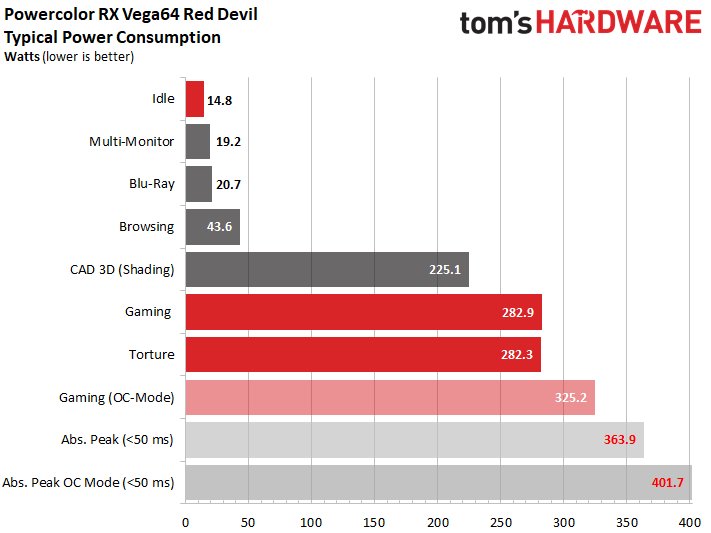
The corresponding voltages for both loops in the factory state are shown in the diagram below, whereby the control fury around the power limit has increased sharply.
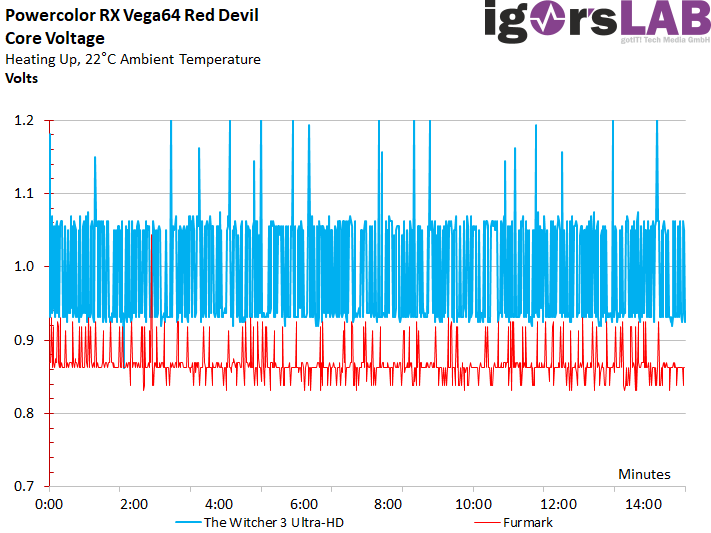
Compliance with the standard on the motherboard slot
With a maximum of 2.4 amps (torture), the card is well below half of what the PCI SIG sets with a maximum of 5.5 amps (66 watts) for the 12 volt rail on the motherboard slot. In the Gaming Loop, you're only 2.3 ampere below. Overall, the balancing has been implemented very exemplary and the mainboard lot is hardly seriously burdened.
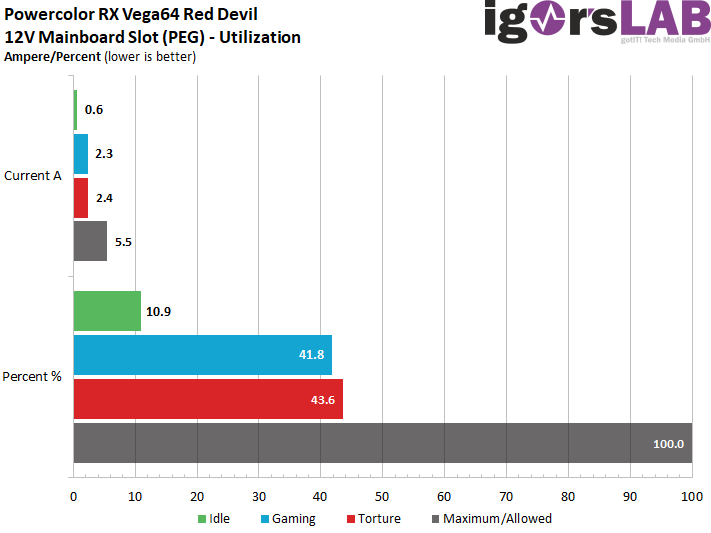
Detailed graphics: power consumption and currents
For better illustration, we have also recorded all measurement results as detailed curves in the graphs below. Naturally, the power consumption peaks in gaming are the most important. With peaks of up to 330 watts, however, you can live well, because they occur only very briefly.
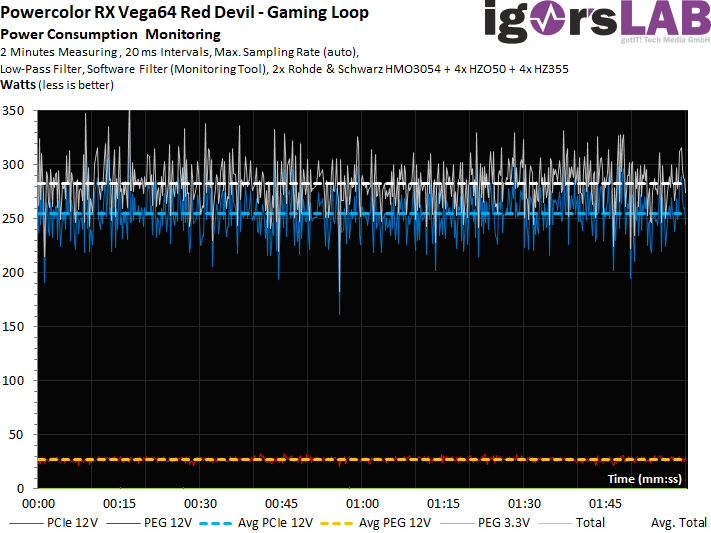
The flowing currents behave in an equivalent way:
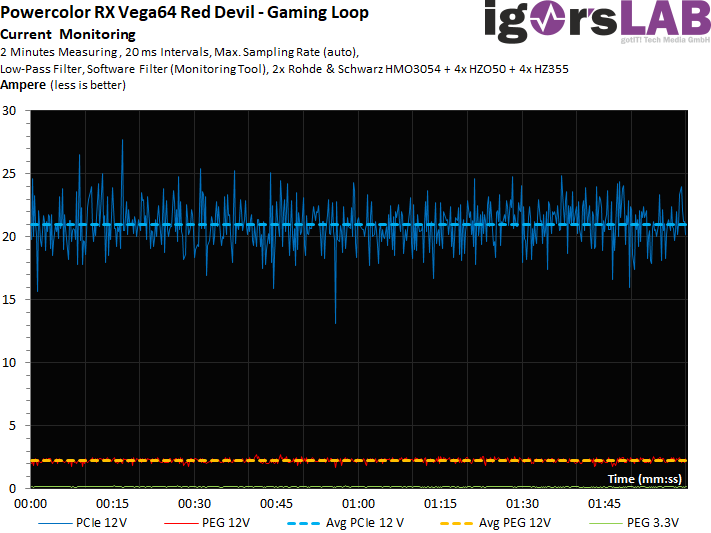
In OC mode, we see the explosion of power consumption very clearly:
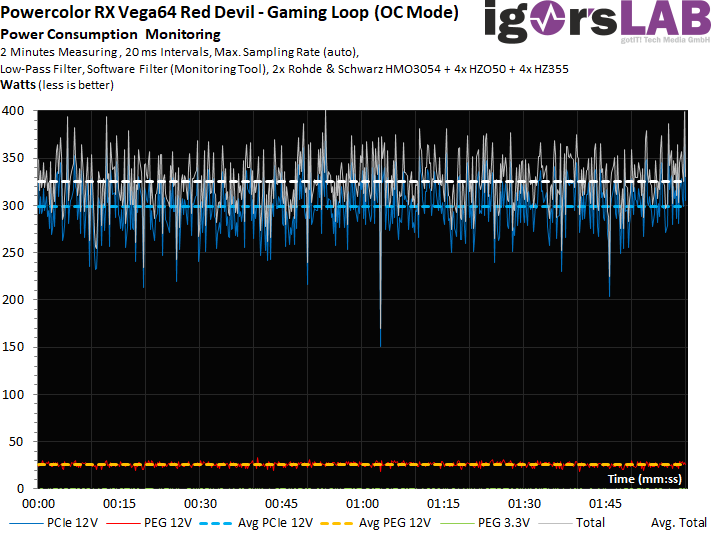
… which of course also applies to the currents:
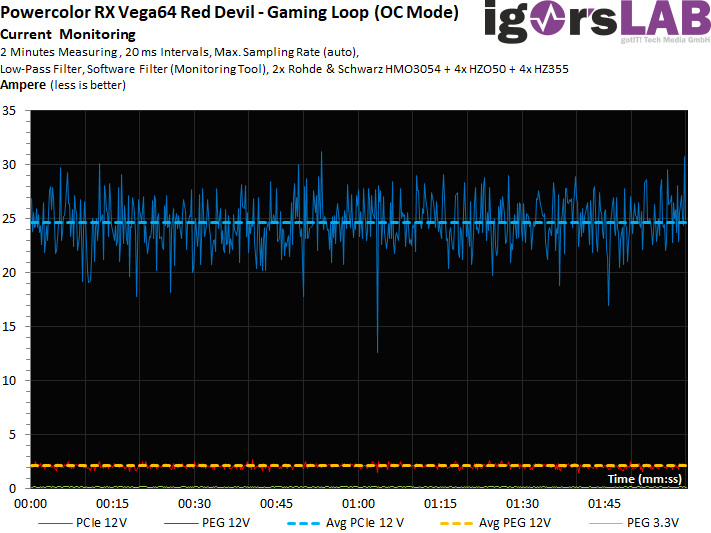
In the stress test, the short-term peaks are significantly lower, even if the power consumption is again slightly higher than for gaming.
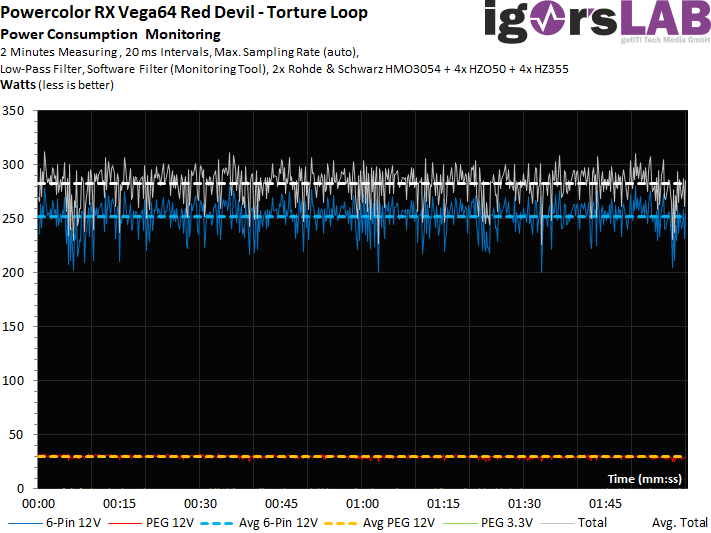
Even now, the flowing currents follow the curve and show no abnormalities.
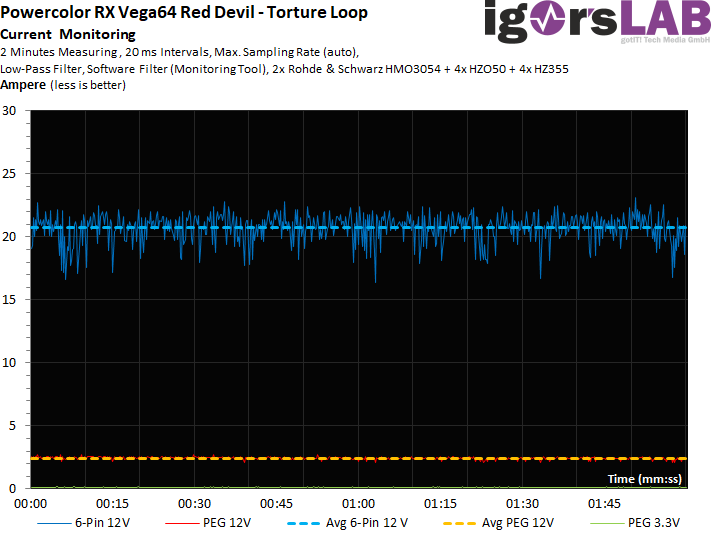
- 1 - Einführung, Unboxing und technischen Daten
- 2 - Spannungsversorgung und detaillierte Platinenanalyse
- 3 - Gaming-Performance in WQHD (2560 x 1400 Pixel)
- 4 - Gaming-Performance in UHD (3840 x 2160 Pixel)
- 5 - Leistungsaufnahme im Detail
- 6 - Temperaturen, Taktraten, OC und Wärmebildanalyse
- 7 - Kühlerdetails und Geräuschentwicklung
- 8 - Zusammenfassung und Fazit
































Kommentieren